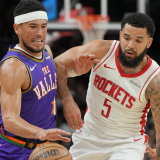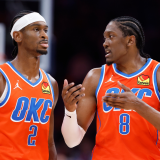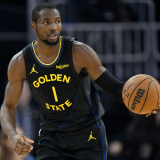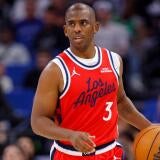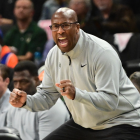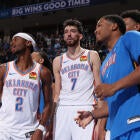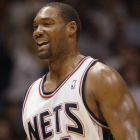Mike Brown bemoans Knicks players 'standing and watching' as offensive growing pains cost them vs. Bucks
The Knicks are still adjusting to their new system, but the early returns have been positive

Teams rarely fire head coaches immediately following a trip to the conference finals. The New York Knicks did so with Tom Thibodeau because, despite that success, they felt there was untapped potential within the group. The team, in the front office's eyes, had gotten stale. The offense was bland and one-dimensional. The bench was often unused. The Knicks had seemingly hit a ceiling, and as the Indiana Pacers showed them in the Eastern Conference finals, that ceiling was below any realistic championship-level.
Mike Brown was hired to fix these things. We're still very early in the season, but the returns thus far have been promising. Through three games, 11 different Knicks had played at least 28 total minutes. They improved from 26th to 20th in pace, 18th to fifth in passes per game, and most amazingly of all, 28th to first in 3-point attempt rate. This is the egalitarian, creative offense the Knicks were seeking.
The first half on Tuesday against the Milwaukee Bucks lived up to those ideals. The Knicks scored 71 points and took a double-digit lead into the locker room at halftime. "It started with [Karl-Anthony Towns]," Brown explained. "As soon as he drew a second guy, boom he got off of it. That guy either shot it or snap drove or passed it. Made a lot of quick decisions in the first half. Touched the paint a lot. Sprayed the ball a lot. We had 15 sprays in the first half. Just offensively it was great."
After those 12 minutes in the locker room, though? Things fell apart. The Knicks scored just 40 second-half points. The Bucks wound up defeating them, 121-111, and Brown explained in detail what he felt went wrong in those last two quarters.
"I talked to our guys, I thought the second half, the ball came to a standstill," Brown explained. "I think you guys all felt it in the second half. The ball didn't move. Whoever had it was like, 'ok, let me try to get my own,' or 'gimme the ball, gimme the ball, gimme the ball.' So our pace went out the window in the full court and the front court. Our spacing went out the window because we just wanted the ball. Quick decisions went out the window because when we had the ball, it was 'ok, lemme see what I can do.' We didn't get the ball reversed because we held onto it quite a bit."
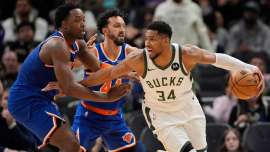
"When those things happen, basketball guys are gonna tell you something," Brown said. "They're gonna get you frustrated, the other team's gonna set their defense, the other team is gonna get out and run off of your misses, and there's not gonna be any energy within your group because everybody is just standing and watching, standing and watching."
This sort of thing can happen when a team tries to make wholesale changes overnight. The Knicks have done a lot more right than wrong so far this season, even if their 2-2 record doesn't reflect that. But they're asking ball-dominant players like Jalen Brunson and Karl-Anthony Towns to completely change their playing style to accommodate a better overall team infrastructure. Some bumps along the way were always inevitable.
But remember, the Knicks are hardly the first team to try to make such significant changes from one season to the next. While the growing pains do come, the rewards have very often proven well worth it.
They need look no further than their opponent on Tuesday for an example of that. The Milwaukee Bucks ranked No. 1 in defense in both the 2018-19 and 2019-20 seasons. In both of the following postseasons, they were upset by a lower seed. Then-coach Mike Budenholzer decided to adjust his scheme from there, introducing more switching and aggressive pick-and-roll coverages especially in lineups that didn't feature Brook Lopez. Milwaukee fell to No. 9 in defense that season, and they slipped from consecutive No. 1 seeds to No. 3 in the 2021 postseason. But they wound up winning the 2021 championship with that change, frequently using smaller, switch-heavier lineups in the NBA Finals to combat Phoenix's shooting after falling down 2-0.
That's how major schematic changes usually work. Armchair coaches like to suggest major adjustments in the middle of playoff series as if a team can master an entirely new system overnight. The truth is that most systems are built on habits. They rely on months or years of muscle memory. For the Knicks right now, that muscle memory is essentially this: Give the ball to Jalen and if he's not open give it to Karl. It is going to take most if not all of the season to break those habits.
But doing so is going to be the key to truly competing for a championship. At their best this season, the Knicks have looked more than capable of doing so. We've seen a lot more of their best than their worst. But the second half in Milwaukee was the worst half of basketball they've played so far this season. Knicks fans can probably expect to see some more games and halves like that. But if the end result is anything like Milwaukee's in 2021, they'll have it figured it out by April and will be that much more dangerous in May and June for having done so.


